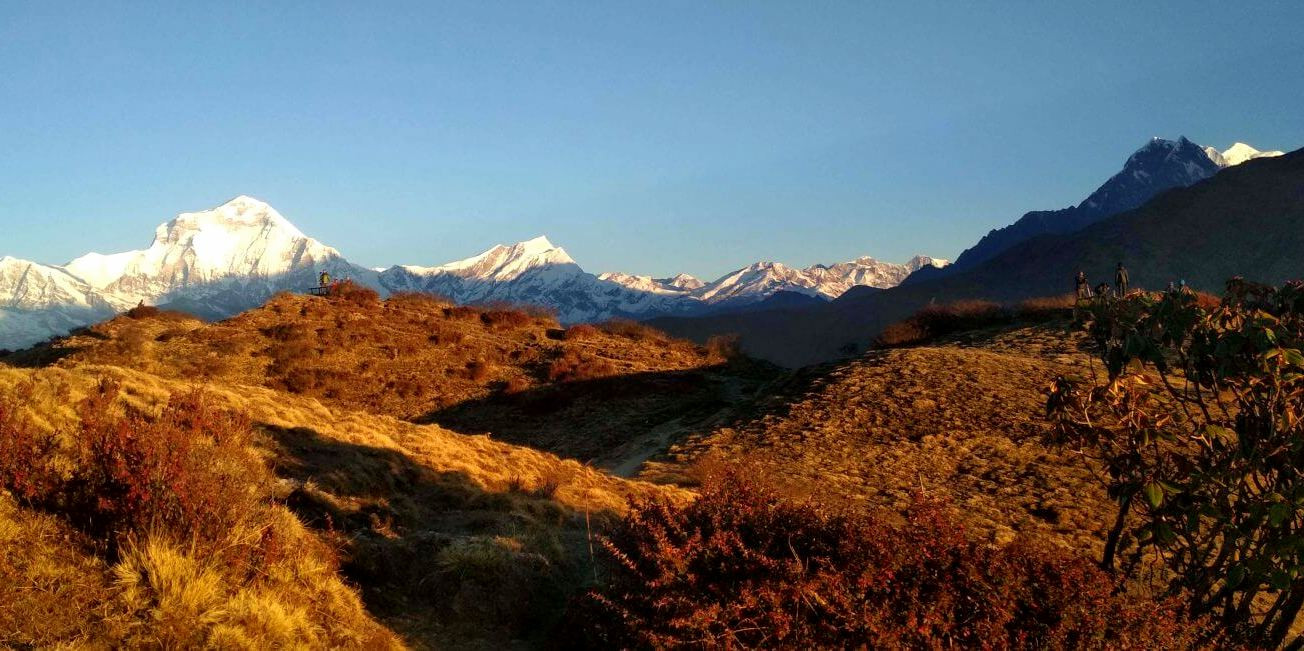Kanchenjunga Base Camp Trek
The Kanchenjunga Base Camp Trek is a thrilling yet less-traveled adventure in Nepal, combining awe-inspiring natural beauty with rich cultural experiences. Towering at 8,586 meters, Kanchenjunga is the third-highest mountain in the world, sitting on the border between Nepal and Sikkim, India. This trek takes you to Nepal’s remote eastern region, offering breathtaking views of the Himalayas in an untouched and peaceful setting.
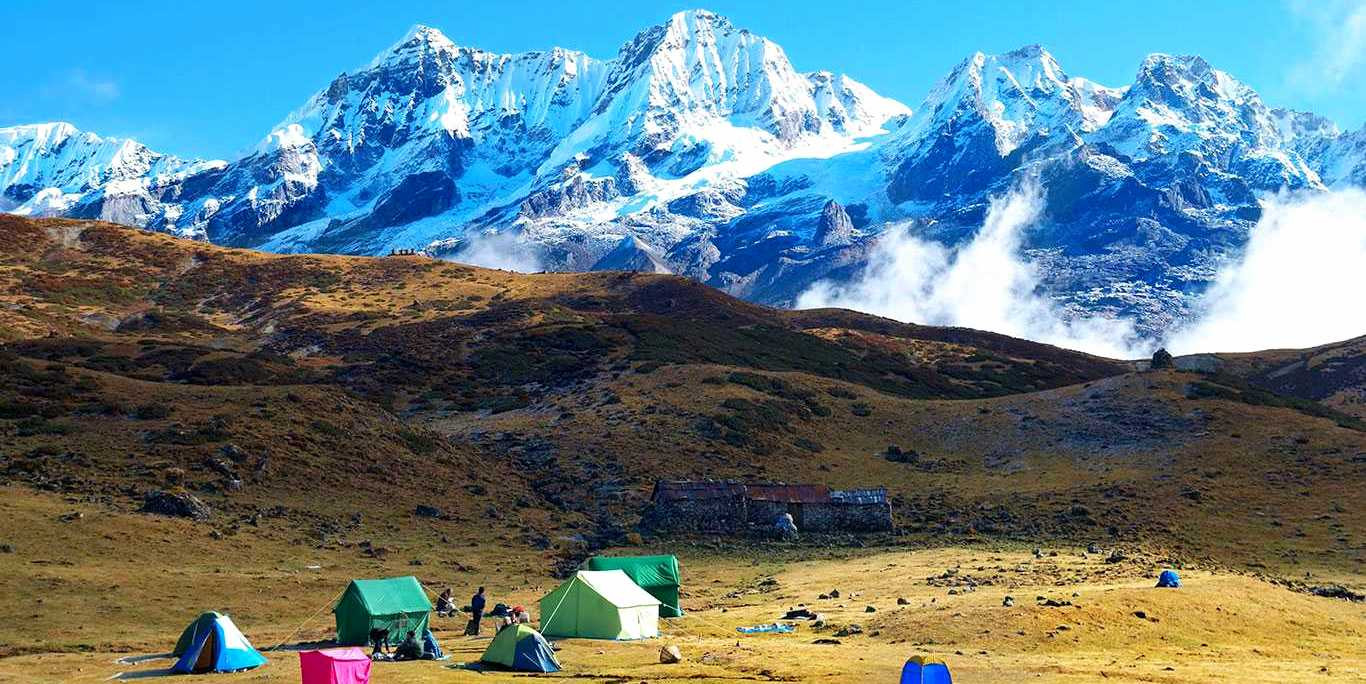
Highlights of the Kanchenjunga Base Camp Trek
-
Stunning Scenery: The trek showcases a variety of landscapes, from vibrant rhododendron forests to rugged, high-altitude terrain. Along the way, you’ll be treated to stunning views of Kanchenjunga’s massive peaks and the surrounding Himalayan ranges.
-
Rich Biodiversity: The Kanchenjunga Conservation Area is a haven for wildlife, home to snow leopards, red pandas, Himalayan black bears, and an incredible diversity of plants and birds.
-
Cultural Experience: As you journey through villages inhabited by the Limbu, Sherpa, and Rai communities, you’ll have a chance to experience their unique traditions, lifestyles, and hospitality, which are deeply rooted in this region.
-
Remote Trails: Unlike busier trekking routes, the Kanchenjunga trek offers a tranquil and off-the-beaten-path experience, perfect for those seeking peace and solitude.
Trekking Itinerary and Challenges
-
The trek typically spans 20 to 25 days, beginning with a scenic flight from Kathmandu to Bhadrapur, followed by a drive to Taplejung, the trailhead. From there, the journey takes you through Mitlung, Ghunsa, and Lhonak, eventually reaching the base camps at Pangpema and Ramche.
-
This trek is physically demanding, requiring 6–8 hours of trekking per day over steep, rugged terrain. It also involves crossing high mountain passes like Sele La, adding an element of adventure and challenge.
Preparation and Permits: Proper preparation is essential for the Kanchenjunga Base Camp Trek due to its remote location and limited infrastructure. Trekkers should be in good physical condition and acclimatized to high altitudes. Permits are required, including the Kanchenjunga Conservation Area Permit and the Restricted Area Permit, as parts of the trail pass through protected and restricted zones.
This trek with an experienced guide and a trusted operator like Relax Getaways ensures a safe and enriching journey. The Kanchenjunga Base Camp Trek offers an unmatched combination of adventure, cultural immersion, and stunning natural backdrops in one of Nepal’s most pristine regions.
Manaslu Circuit Trek
The Manaslu Circuit Trek is an incredible adventure that takes you around Manaslu, the eighth-highest mountain in the world, standing at 8,163 meters (26,781 feet). Known for its breathtaking landscapes, rich cultural experiences, and quieter trails, this trek is perfect for those seeking an immersive Himalayan journey away from the crowds. It offers a rare combination of natural beauty and cultural depth, making it a favorite among trekkers looking for a unique and peaceful experience.
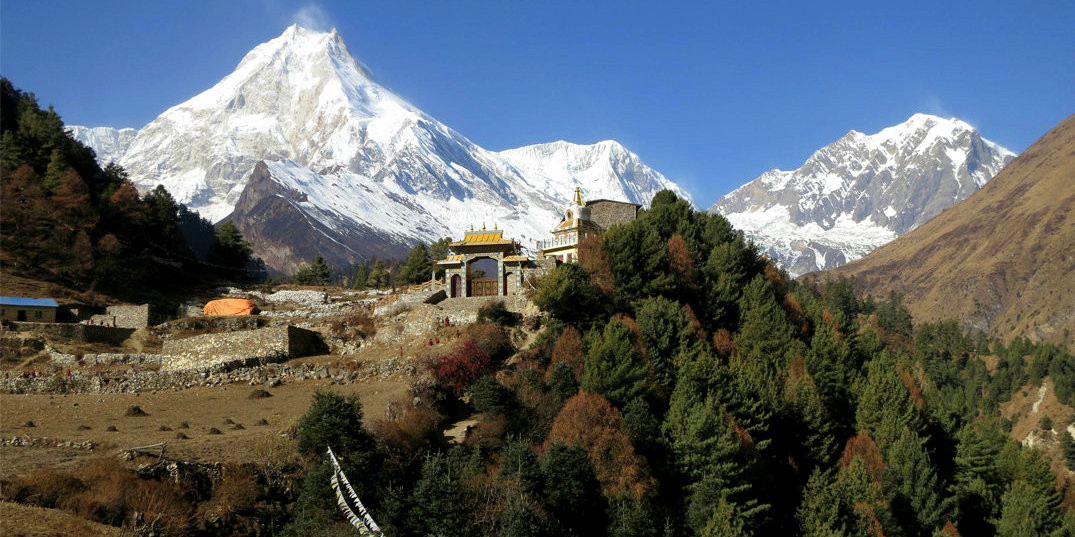
Highlights of the Manaslu Circuit Trek
-
Diverse Landscapes: The trek takes you through a variety of terrains, from lush subtropical jungles and verdant forests in the lower regions to glaciers and dramatic high-altitude landscapes as you ascend.
-
Cultural Immersion: This trail passes through ancient Buddhist regions closely tied to Tibetan culture. Along the way, you’ll explore centuries-old monasteries, visit traditional villages, and interact with the Gurung and Tibetan communities, offering a deeper understanding of the local way of life.
-
Larkya La Pass: A standout moment of the trek is crossing the Larkya La Pass, a high mountain pass at 5,106 meters (16,752 feet). It’s both a challenging and rewarding experience, offering panoramic views of Manaslu and neighboring peaks.
-
Rich Biodiversity: The Manaslu Conservation Area is home to diverse flora and fauna. If you’re lucky, you might catch a glimpse of rare wildlife such as the snow leopard, Himalayan Tahr, or some of the region’s vibrant bird species.
Trekking Itinerary and Challenges: The Manaslu Circuit Trek typically takes 14 to 18 days to complete. It begins at Soti Khola and ends in Besisahar, which also serves as the starting point for the Annapurna Circuit. Trekkers usually hike for 6 to 7 hours daily, navigating steep ascents, descents, river crossings, and high-altitude terrain. The trek’s highlight, crossing the Larkya La Pass, demands good physical fitness and proper acclimatization to avoid altitude sickness.
Preparation and Permits: As the Manaslu Circuit is a controlled trekking route, several permits are required. These include the Restricted Area Permit, the Manaslu Conservation Area Project (MCAP) Permit, and the Annapurna Conservation Area Project (ACAP) Permit (if continuing into the Annapurna region). Trekkers are also required to travel with a registered guide and be part of a group of at least two people.
By choosing a trusted trekking operator like Relax Getaways, you’ll have everything covered—from permits and experienced guides to essential support—ensuring a safe, enjoyable, and unforgettable journey. The Manaslu Circuit Trek is not just a physical challenge; it’s an opportunity to connect with nature and culture, leaving you with lasting memories of the stunning Himalayas.
Tsum Valley Trek
The Tsum Valley Trek offers a tranquil and spiritual escape into one of Nepal’s most remote Himalayan valleys. Known for its breathtaking landscapes and deep-rooted Buddhist heritage, the Tsum Valley is often called the "hidden valley" because of its isolation and the ancient Tibetan culture that flourishes here. This trek is perfect for those seeking peace, cultural immersion, and a unique Himalayan experience far from the busier trekking routes.
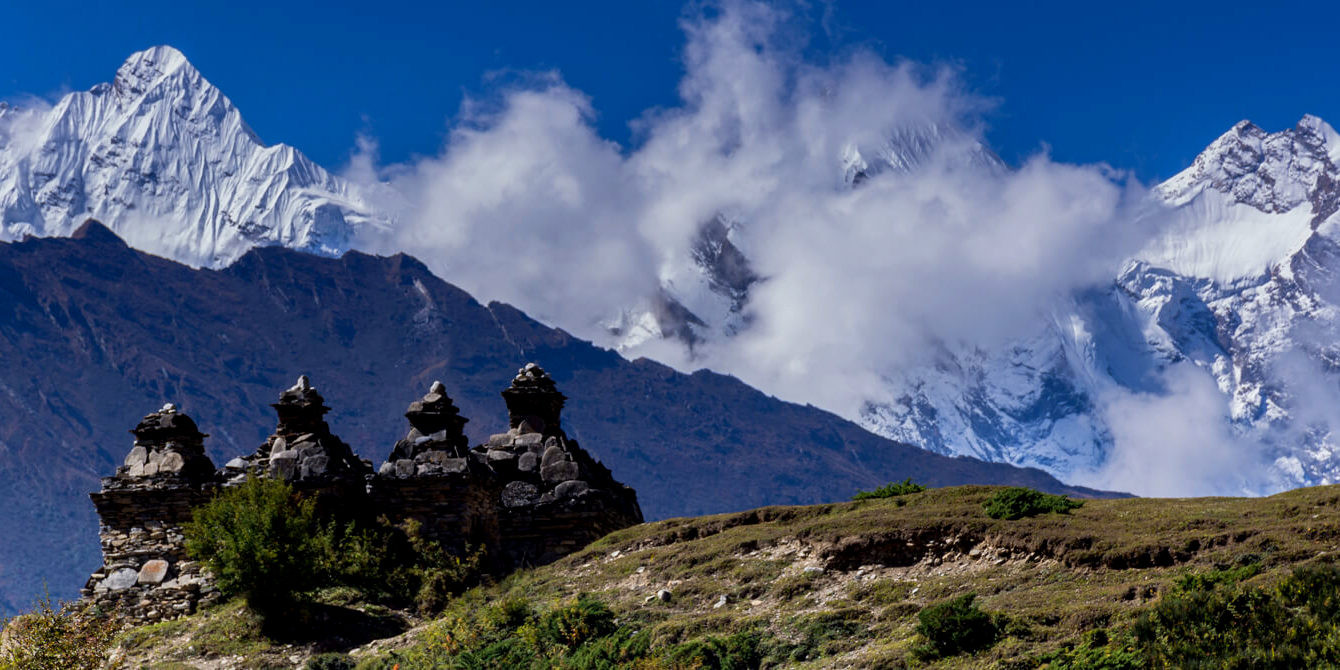
Highlights of the Tsum Valley Trek
-
Spiritual Richness: The valley is steeped in Buddhist traditions, with ancient monasteries, chortens, and mani walls scattered throughout the region. The local Tsumbas practice Tibetan Buddhism, and their spiritual way of life is beautifully woven into their daily routines.
-
Scenic Beauty: Trekkers are rewarded with stunning views of the Ganesh Himal, Sringi Himal, and Boudha Himal ranges. The trail winds through lush forests, steep cliffs, picturesque villages, and striking high-altitude landscapes.
-
Unique Culture: The Tsum Valley’s culture is unlike any other in Nepal, closely tied to Tibetan traditions. The locals are known for their warm hospitality, unique festivals, and time-honored customs that have remained unchanged for centuries.
-
Rare Wildlife: As part of the Tsum Valley and Manaslu Conservation Area, the region is a sanctuary for rare species like the Himalayan Tahr and Blue Sheep. Birdwatchers will also enjoy spotting a variety of Himalayan bird species in this pristine environment.
Trekking Itinerary and Challenges: The trek usually takes 18 to 21 days, depending on your route and pace, and it starts and ends in Arughat or Soti Khola, following part of the Manaslu Circuit route. While the trek is considered moderate, it involves long walks over rugged terrain. However, it lacks the extreme high-altitude challenges of other Himalayan treks. Key stops include Chumling, Chhokangparo, Nile, and Mu Gompa, where trekkers can explore the valley’s rich culture and natural beauty.
Preparation and Permits: Due to its remote location and proximity to Tibet, a Restricted Area Permit is required for the Tsum Valley Trek. This must be obtained through a registered trekking agency. Trekkers also need a Manaslu Conservation Area Permit (MCAP) to enter the region. While the trek is moderate, good physical fitness and some prior trekking experience are recommended, as the trails can be challenging at times.
When you choose Relax Getaways, you can expect a safe, well-organized, and deeply rewarding journey into the Tsum Valley. Our experienced guides not only ensure a smooth trekking experience but also help you connect with the local communities and their fascinating traditions. By trekking with us, you’ll explore the untouched beauty of the Himalayas while gaining a profound appreciation for the valley’s unique cultural and spiritual heritage.
Upper Dolpo Trek
The Upper Dolpo Trek is a truly extraordinary adventure into one of Nepal’s most remote and untouched regions. Located in the rugged western part of the country, Upper Dolpo is known for its starkly beautiful landscapes, deeply rooted Tibetan Buddhist culture, and its mystique as one of Nepal’s least accessible areas. This trek offers a rare chance to explore a world that has remained almost entirely unchanged for centuries.
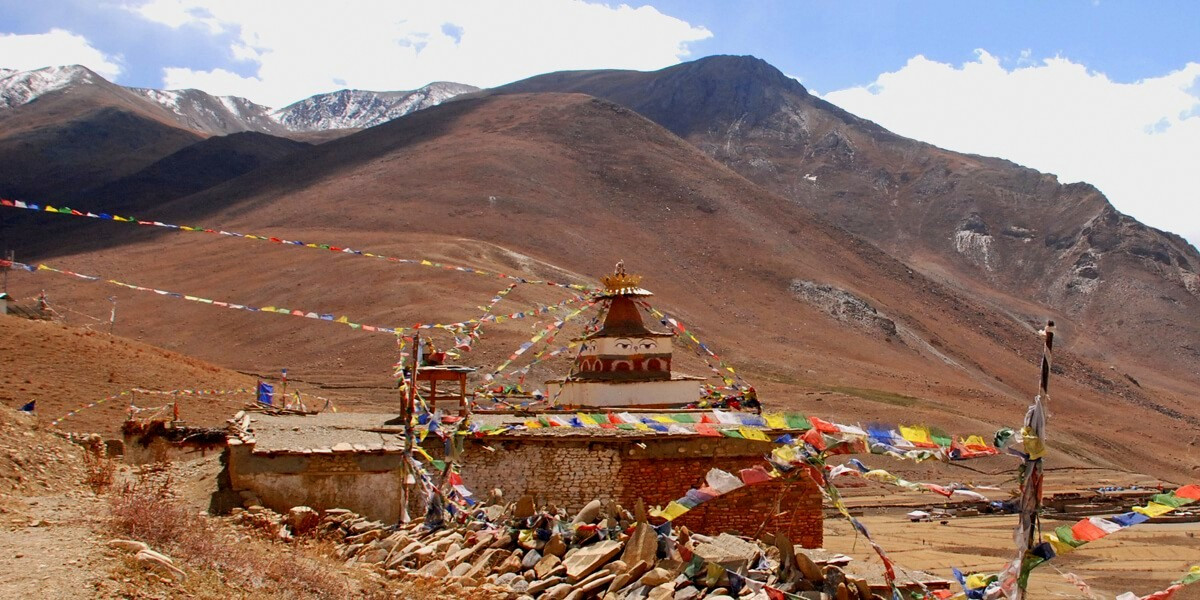
Highlights of the Upper Dolpo Trek
-
Shey Gompa and the Crystal Mountain: The trek takes you to the legendary Shey Gompa, which is over 800 years old, located at the base of Crystal Mountain, itself considered sacred and a place of yearly pilgrimage.
-
Phoksundo Lake: Visit the stunning Phoksundo Lake, known for its deep blue and emerald colors, and the spectacular waterfall leading into it, which is one of the highest in Nepal.
-
Remote Tibetan Culture: Experience the authentic and isolated lifestyle of the Dolpo people, whose traditions and way of life have remained unchanged for centuries.
-
High Passes: Traverse several high mountain passes, providing breathtaking views of the Dhaulagiri massif and the Tibetan Plateau.
Trek Route and Duration: The Upper Dolpo Trek typically starts from Juphal, accessed by a flight from Nepalgunj, and can take around 20-28 days to complete. The trek involves crossing several high passes, including Numa La (5,190 m) and Baga La (5,070 m), which offer some of the most beautiful vistas in the Himalayas. The route also loops through several unique and picturesque villages, deep valleys, and ancient monasteries.
Difficulty and Requirements: The Upper Dolpo Trek is considered challenging due to its high passes, remote location, and the need for sustained physical endurance. The trek demands excellent physical condition and previous trekking experience at high altitudes. Special permits are required to enter Upper Dolpo, as it is a restricted area. These permits help maintain the region's exclusivity and protect its unique culture and environment.
By choosing Relax Getaways for the Upper Dolpo Trek, trekkers can rely on expert guidance and support throughout their journey. Our experienced guides not only ensure safe passage through this rugged terrain but also provide in-depth insights into the local culture, enhancing the overall trekking experience. This trek is ideal for those looking to explore one of the most untouched and culturally rich areas of Nepal, offering a sense of adventure and isolation that is increasingly rare in today’s world.
Makalu Base Camp Trek
The Makalu Base Camp Trek is a one-of-a-kind adventure that takes you to the base of Mount Makalu, the world’s fifth-highest mountain at an impressive 8,485 meters (27,838 feet). Perfect for trekkers seeking solitude and a challenging journey, this trek offers the chance to explore one of the most remote and less-traveled paths in the Himalayas. With its incredible landscapes and demanding trails, the Makalu Base Camp Trek is a deeply rewarding experience for seasoned adventurers.
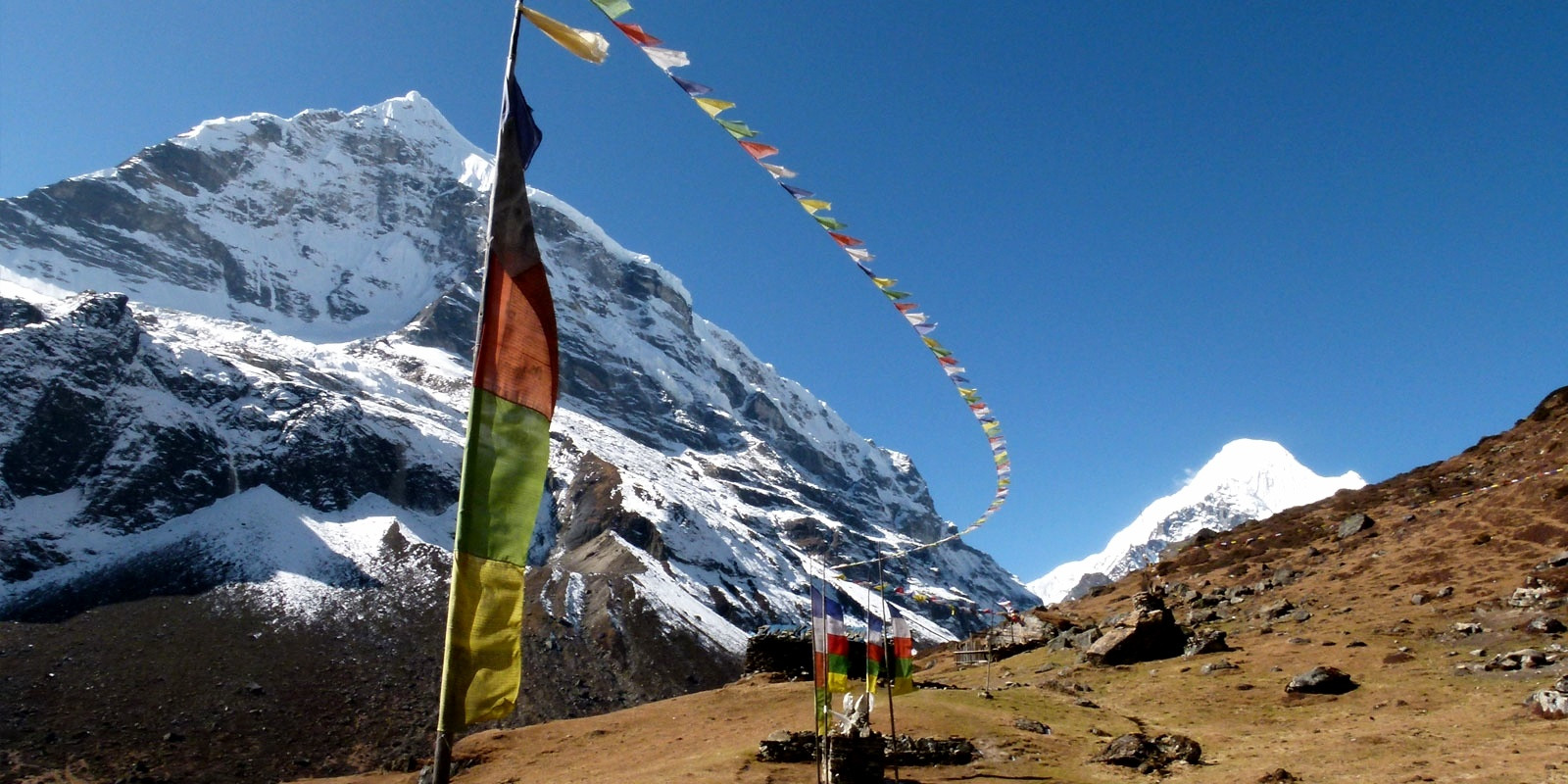
Highlights of the Makalu Base Camp Trek
-
Diverse Landscapes: The trek showcases a range of stunning ecosystems, from the lush tropical Arun Valley and dense forests to picturesque alpine meadows and the stark, rugged terrain of high-altitude zones.
-
Makalu-Barun National Park: As part of the Eastern Himalayan biodiversity hotspot, this park is home to a wide variety of flora and fauna, including the endangered red panda and the elusive snow leopard, making it a paradise for nature lovers.
-
High Altitude Challenges: The trek includes navigating through tough high-altitude terrain, with one of the main highlights being the crossing of the Shipton La Pass, which sits at over 4,200 meters.
-
Spectacular Mountain Views: Trekkers are rewarded with breathtaking panoramas of Himalayan giants, including Makalu, Everest, Lhotse, Baruntse, and more, from several vantage points along the trail.
-
Cultural Experience: The trek also offers an enriching cultural experience, with opportunities to interact with the Rai and Sherpa communities who call this remote region home. Their warm hospitality and unique traditions provide a glimpse into traditional mountain life.
Trekking Itinerary and Challenges
-
The Makalu Base Camp Trek usually takes 20 to 22 days to complete. Starting with a flight from Kathmandu to Tumlingtar, the journey progresses through Chichila, Num, Seduwa, Tashigaon, and Khongma Danda, and eventually reaches Makalu Base Camp. The return can follow the same path or take a different route, depending on preferences.
-
This trek is strenuous, requiring excellent physical fitness and stamina due to its length, altitude gains, and the isolation of the area. Days often involve long hikes in rugged conditions, making it a test of endurance and determination.
Preparation and Permits: To undertake the Makalu Base Camp Trek, trekkers need a Makalu-Barun National Park Permit and a TIMS card (Trekker’s Information Management System). Given the remote nature of the trek, thorough preparation is essential, including packing the right gear, building physical endurance, and preparing mentally for the challenges ahead. Having an experienced guide is strongly recommended to ensure safety and help navigate this demanding route.
When you trek with Relax Getaways, you can count on expert guidance, seamless logistics, and an immersive experience that allows you to fully appreciate the breathtaking beauty and rich culture of the Himalayas. Our experienced team ensures your safety and comfort, making the Makalu Base Camp Trek an unforgettable journey into one of Nepal’s most pristine and remote landscapes.
Tips for Top 5 Less Crowded Treks in Nepal
Top 5 Less Crowded Treks in Nepal can be a transformative experience, offering not only breathtaking landscapes but also intimate cultural encounters. Here are some essential tips to enhance your trekking experience in these remote regions:
Prepare Physically
-
Endurance Training: These treks require good physical fitness. Begin training several months in advance, focusing on cardio, strength training, and long-distance hiking.
-
Acclimatization: Take time to acclimatize properly to avoid altitude sickness. Plan your itinerary to gradually ascend and include acclimatization days.
Pack Smart
-
Layered Clothing: Weather can be unpredictable. Pack layered, moisture-wicking clothing that you can add or remove as needed.
-
Essential Gear: Include a good pair of hiking boots, a sleeping bag suitable for cold temperatures, a first aid kit, water purification tablets, and a reliable trekking pole.
-
Navigation Tools: Carry detailed maps, a compass, or a GPS device, especially for areas like Upper Dolpo and Kanchenjunga which are less trodden and have fewer signposts.
Secure Necessary Permits
-
All these treks pass through restricted areas requiring special permits. Arrange these well in advance through a registered trekking agency.
-
Always trek with a registered guide as required by the regulations in restricted areas like Manaslu and Dolpo.
Respect Local Customs
-
Cultural Sensitivity: Learn about and respect the local customs and traditions. Dress modestly and always ask permission before taking photographs of local people or religious sites.
-
Environmental Awareness: Practice Leave No Trace principles to keep the environments clean and undisturbed.
Stay Safe
-
Travel Insurance: Ensure you have travel insurance that covers high-altitude trekking and medical evacuation.
-
Stay Hydrated: Drink plenty of water to stay hydrated and help with acclimatization.
-
Hire Local Guides: Local guides not only enhance your safety but also enrich your understanding of the area’s history, culture, and geography.
Be Prepared for Isolation
-
Mental Preparation: These treks can be physically and emotionally demanding. Prepare mentally for the challenges of trekking in isolated areas.
-
Communication: Satellite phones or radios can be essential for emergency communication in these remote areas.
Budget Accordingly
- While these treks are in less touristy areas, the cost of transportation, guides, porters, and permits can add up due to the remoteness and need for specialized arrangements.
By following these tips, you'll be well-prepared to tackle the challenges and reap the immense rewards that come with trekking in some of Nepal’s most untouched and beautiful regions. Each trek offers a unique glimpse into the natural and cultural splendors of Nepal, making them unforgettable adventures for those willing to venture off the beaten path.
Best Time for Top 5 Less Crowded Treks in Nepal
Here’s a season-by-season guide to the best times for trekking the Top 5 Less Crowded Treks in Nepal, offering insights into what you can expect during different parts of the year:
-
Spring (March to May): Spring is one of the most favorable seasons for trekking in Nepal. The weather is warm, and the skies are generally clear, providing excellent visibility of the majestic Himalayas. This season is especially beautiful as the landscapes burst into life with blooming flowers, particularly rhododendrons.
-
Summer (June to August): Monsoon Season: Summer in Nepal coincides with the monsoon, making trekking challenging due to heavy rains, leeches, slippery trails, and potential landslides. Visibility is also reduced, with frequent cloud cover and fog.
-
Autumn (September to November): Peak Trekking Season: Autumn is another perfect time for trekking in Nepal, characterized by stable weather and clear skies. After the monsoon, the air is clean and fresh, and the mountain views are spectacular.
-
Winter (December to February): Winter brings cold weather, with temperatures often dropping below freezing in high-altitude areas. Snowfall can close high passes and make some trails inaccessible.
Optimal times for embarking on the less crowded treks in Nepal are during the spring and autumn seasons. These periods offer the best weather conditions, allowing for a more enjoyable and safer trekking experience. Winter and summer present more challenges and require careful planning and monitoring of weather conditions if you choose to trek during these seasons.
The Top 5 Less Crowded Treks in Nepal—Kanchenjunga Base Camp, Manaslu Circuit, Tsum Valley, Upper Dolpo, and Makalu Base Camp—offer a rare chance to explore some of the most untouched and remote corners of the Himalayas. Each of these treks comes with its own set of challenges and incredible rewards, from awe-inspiring landscapes to deep cultural connections. By choosing Relax Getaways as your trekking partner, you’ll benefit from expert guidance, a strong focus on safety, and meaningful insights into the traditions and beauty of Nepal. Step off the beaten path and embark on a journey that blends physical adventure with cultural discovery, leaving you with memories to last a lifetime. Let us help you experience the true essence of trekking in Nepal.
FAQs for Top 5 Less Crowded Treks in Nepal
Q: What are the best seasons to trek in Nepal’s less crowded regions?
A: Spring (March to May) and Autumn (September to November) are the best times for trekking in these regions due to stable weather, clear skies, and optimal visibility.
Q: Do I need a guide for these treks?
A: Yes, a licensed guide is mandatory for most of these treks, especially in restricted areas like Manaslu, Tsum Valley, Upper Dolpo, and Kanchenjunga. Guides ensure safety and enhance the overall experience.
Q: What permits are required for these treks?
A: You will need specific permits, including Restricted Area Permits and Conservation Area or National Park permits. It's advisable to arrange these through a registered trekking agency.
Q: How physically demanding are these treks?
A: These treks range from moderate to challenging. They require good physical fitness and proper acclimatization due to long walking days, rugged terrain, and high altitudes.
Q: Are these treks suitable for solo trekkers?
A: While solo trekking is possible, regulations often require trekking with a guide or a group, especially in restricted areas. For safety, trekking with others is recommended.
Q: How do I manage food and accommodations on these treks?
A: Most treks offer teahouse accommodations. In more remote parts like Upper Dolpo and Kanchenjunga, you might need to camp. It's best to arrange meals and lodging through a trekking agency.
Q: What are the main safety concerns while trekking in these areas?
A: The primary concerns include altitude sickness, unpredictable weather, and navigating remote trails. Have a communication plan, stay informed about the weather, and heed your guide’s advice.
Q: How can I ensure responsible trekking in these regions?
A: Respect local customs, minimize environmental impact by sticking to trails, and manage your waste responsibly. Also, support local economies by using local services and products.
For the Nepal tour, please click here.
If you are looking for different kinds of Nepal Tours or Trekking Packages, feel free to contact us.
